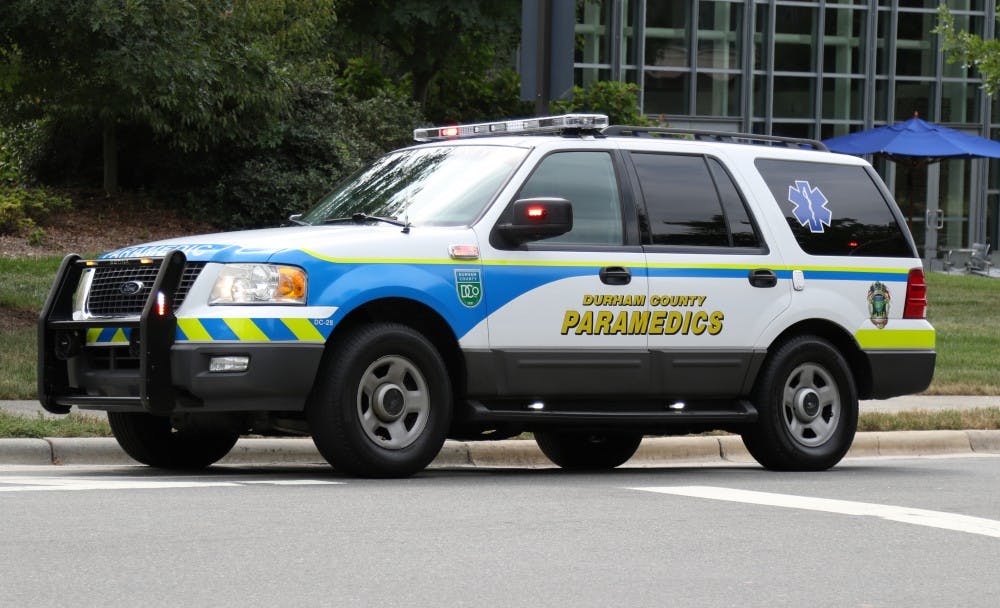Four alcohol-related calls to Duke Emergency Medical Services occurred during this year’s orientation week—two fewer than last year.
Since Aug. 18, there have been 19 EMS calls—four of which were alcohol-related, said senior Chris Endo, director of Duke EMS. Last year, there were 20 EMS calls during orientation week, with six of them alcohol-related. Before Saturday of this week, there had been only one alcohol-related EMS call, Endo said, but that number spiked significantly with three calls on Saturday night. Of the four alcohol-related calls, two occurred on East Campus and two on West.
Due to the Health Insurance Portability and Accountability Act, Endo was unable to disclose personal information such as the class year of the students in question.
“Honestly the number of transported students to the hospital for alcohol poisoning only informs us that students are watching out for each other and calling for help, when necessary,” wrote Tom Szigethy, associate dean and director of the Duke Student Wellness Center, in an email.
Three of the four alcohol-related calls resulted in the students being taken to the hospital—both of the East Campus incidents and one from West Campus. Six students were transported during last year’s orientation week, and two were transported during orientation week in 2013.
Not all alcohol-related EMS calls result in transporting the student to the hospital, Endo explained, adding that both Duke EMS and Durham County EMS assess the situation at the scene before deciding whether or not to transport.
Rather than using the number of students transported to the hospital as a measure of alcohol use during the week, administrators prefer to look at the average blood alcohol content of those students, Szigethy explained. He noted that the average BAC of transported students has decreased over the past three years.
“This means that students are calling for help earlier in the night and therefore stopping the high-risk behavior,” Szigethy wrote.
Alcohol-related calls are actually the minority of the calls Duke EMS responds to, Endo said. Miscellaneous injuries, allergic reactions, cardiac and respiratory problems and other forms of trauma make up the remainder.
Duke EMS only responds to off-campus calls in rare circumstances—but this does not necessarily mean the overall number of calls was much higher than the number of calls Duke EMS responded to, Endo said.
Some freshmen have attributed the low EMS numbers before Saturday to the hectic schedule of the first week, which made opportunities to drink rare. More mandatory programs were added to orientation week this year, wrote Jordan Hale, assistant dean and director of new student programs, in an email.
“I think that the biggest deterrent was a combination of having a ton of activities like the Target Run and Brodie Gym Carnival, as well as people being more cautious about how much they drank and being smarter about it,” said freshman Alex Cherches. “I’m fairly sure that True Blue and AlcoholEdu had a minimal impact on the lower EMS numbers.”
As in previous years, freshmen were required to complete AlcoholEdu and attend True Blue during orientation week. Duke EMS has also worked with resident assistants to provide step-by-step instructions for dealing with alcohol-related incidents, Endo added.
Editor’s note: The Chronicle spoke with Endo in person and by email.
Get The Chronicle straight to your inbox
Signup for our weekly newsletter. Cancel at any time.

